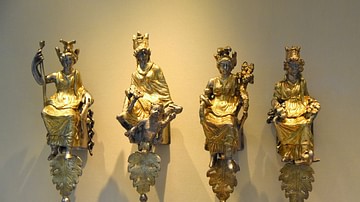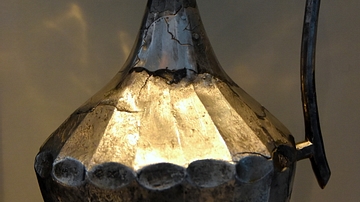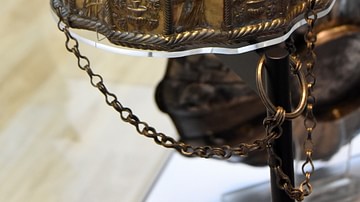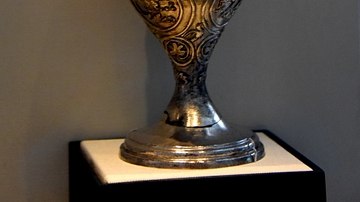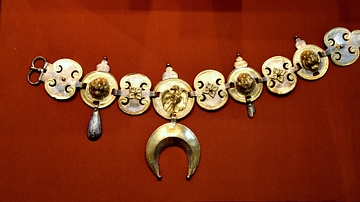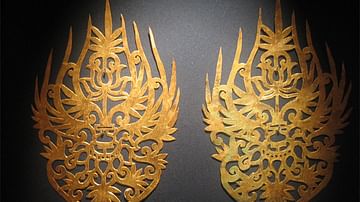Illustration
These probably formed the terminals to the arm-rests of a chair. Each is in the form of a forearm , with a twisted band around the wrist, and hand gripping a sceptre. The elaborate gilding and the sceptre imagery implies that the owner was not only rich but also held a significant public office. Part of the Esquiline Treasure, which was discovered in the year 1793 CE, at the foot of the Esquiline Hill, Rome, Italy. Circa 380 CE. From Rome. (The British Museum, London).
About the Author
Cite This Work
APA Style
Amin, O. S. M. (2016, October 02). Silver Furniture Ornaments from the Esquiline Treasure. World History Encyclopedia. Retrieved from https://www.worldhistory.org/image/5750/silver-furniture-ornaments-from-the-esquiline-trea/
Chicago Style
Amin, Osama Shukir Muhammed. "Silver Furniture Ornaments from the Esquiline Treasure." World History Encyclopedia. Last modified October 02, 2016. https://www.worldhistory.org/image/5750/silver-furniture-ornaments-from-the-esquiline-trea/.
MLA Style
Amin, Osama Shukir Muhammed. "Silver Furniture Ornaments from the Esquiline Treasure." World History Encyclopedia. World History Encyclopedia, 02 Oct 2016, https://www.worldhistory.org/image/5750/silver-furniture-ornaments-from-the-esquiline-trea/. Web. 26 Apr 2025.



